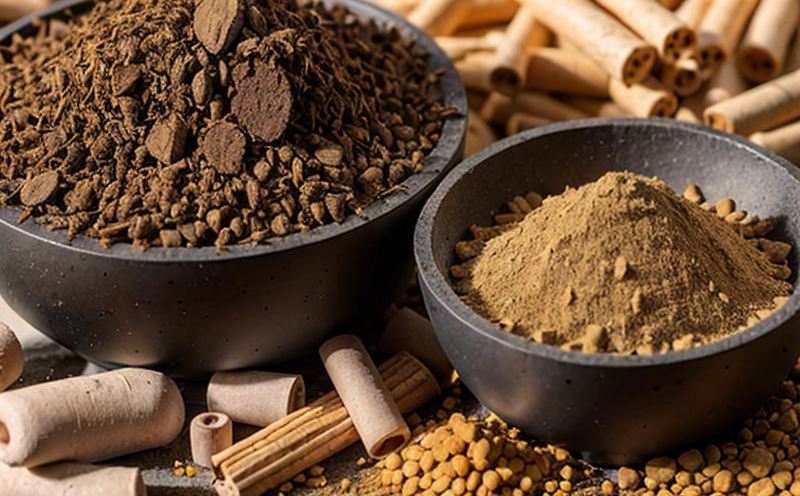ISO 18123 Determination of Volatile Matter in Biomass Fuels
The determination of volatile matter (VM) content is a critical parameter in assessing biomass fuels for energy applications. Volatile matter refers to the portion of a fuel that evolves as gases during heating at specific temperatures and pressures, providing insights into the fuel's composition and combustion characteristics. This service adheres to ISO 18123, which specifies the method for determining VM in biomass fuels.
The procedure involves heating a sample under controlled conditions, typically at 500°C ± 1°C over 7 minutes, followed by cooling. The weight loss during this process is measured and expressed as a percentage of the original sample mass. This measurement helps in evaluating fuel quality, predicting combustion behavior, optimizing feedstock selection, and ensuring compliance with international standards.
Understanding VM content allows for accurate calibration of biomass fuel systems, optimization of combustion processes, and assessment of energy efficiency. The service can be used during research and development stages to evaluate new biomass feedstocks or in manufacturing settings to ensure consistent product quality.
The testing process is highly standardized to ensure reproducibility and comparability across different laboratories worldwide. The apparatus required includes a muffle furnace with precise temperature control, balance accurate to at least 0.1 mg, and desiccators for moisture content regulation. Sample preparation involves drying the biomass fuel samples in a forced-air oven until constant weight is achieved.
For accurate results, it is essential that the sample be representative of the batch or lot being tested. This may involve sub-sampling techniques to ensure homogeneity. The VM determination serves as a key indicator for assessing the potential calorific value and combustion characteristics of biomass fuels, which are crucial for optimizing energy conversion processes in power plants, heating systems, and other industrial applications.
Why It Matters
The accurate measurement of volatile matter content is pivotal for several reasons. Firstly, it influences the efficiency of combustion processes, affecting both the amount of heat generated and the emissions produced. High VM content can lead to more efficient combustion but also increases the risk of incomplete combustion, which results in higher emissions.
Secondly, this parameter helps in selecting appropriate biomass feedstocks for specific applications. For instance, fuels with a high VM content may be better suited for gasification processes compared to those intended for direct combustion. Understanding the VM content can guide the design and optimization of bioenergy systems, leading to enhanced performance and reduced operational costs.
Additionally, regulatory compliance is ensured by adhering to international standards like ISO 18123. This ensures that the testing methods are consistent across different jurisdictions, facilitating trade and standardization efforts in the biomass fuel industry.
Industry Applications
| Biomass Fuel Type | VM Content Range (% dry basis) |
|---|---|
| Pelletized Wood Chips | 15–30 |
| Bagasse (Sugarcane Waste) | 28–45 |
| Municipal Solid Waste | 40–60 |
| Algae Biomass | 35–50 |
- Bioenergy Conversion Facilities: To optimize combustion processes and improve energy yield.
- Biomass Research Laboratories: For evaluating new biomass feedstocks and improving conversion technologies.
- Institutions Regulating Biomass Fuels: Ensuring compliance with international standards to enhance safety and efficiency.
- Manufacturing Plants Utilizing Biomass: To maintain consistent fuel quality and optimize performance.
Quality and Reliability Assurance
The determination of volatile matter content is a cornerstone in the quality assurance process for biomass fuels. By adhering to ISO 18123, laboratories ensure that their testing methods are consistent with international best practices. This standardization not only enhances the reliability of test results but also facilitates global trade by ensuring compatibility across different markets.
Quality control measures include regular calibration of equipment, use of certified reference materials for validation, and adherence to strict laboratory protocols. These steps ensure that the testing process is robust and can be trusted to provide accurate and reliable data.
The reproducibility of results is crucial for maintaining trust within the industry. By using standardized procedures and well-maintained equipment, laboratories can consistently produce accurate VM measurements. This consistency is vital for stakeholders involved in bioenergy projects, as it allows them to make informed decisions based on reliable data.





